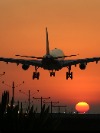B787 - LIMITATIONS
|
|
Título del Test: B787 - LIMITATIONS Descripción: Limitations |



| Comentarios |
|---|
NO HAY REGISTROS |
|
Runway slope: +/- 2%. +/- 3%. +/- 4%. Maximum Takeoff and Landing Tailwind Component: 15 knots. 10 knots. 20 knots. Maximum Operating Altitude: 43,100 ft pressure altitude. 40,000 ft pressure altitude. 43,000 ft pressure altitude. Maximum Takeoff and Landing Altitude: 14,000 ft pressure altitude. 8,000 ft pressure altitude. 11,000 ft pressure altitude. Turbulent air penetration speed (in severe turbulence) is defined as: _______ below 25,000ft and _________________ (whichever is lower) at and above 25,000ft. 290 KIAS / 310 KIAS or .84 Mach. 250 KIAS / 310 KIAS or .84 Mach. 290 KIAS / 310 KIAS or .76 Mach. The maximum demonstrated crosswind for: takeoff is 35 knots and for landing is 33 knots. takeoff is 25 knots and for landing is 23 knots. takeoff is 30 knots and for landing is 35 knots. Prior to takeoff the maximum allowable difference between Captain’s or First Officer’s altitude display and field elevation is: 75 feet. 50 feet. 200 feet. Maximum Taxi Weight: 228,383 Kilograms. 227,930 Kilograms. 172,365 Kilograms. 161,025 Kilograms. Maximum Takeoff Weight: 228,383 Kilograms. 227,930 Kilograms. 172,365 Kilograms. 161,025 Kilograms. Maximum Landing Weight: 228,383 Kilograms. 227,930 Kilograms. 172,365 Kilograms. 161,025 Kilograms. Maximum Zero Fuel Weight: 228,383 Kilograms. 227,930 Kilograms. 172,365 Kilograms. 161,025 Kilograms. Autopilot/Flight Director System The autopilot must not be engaged below a minimum engage altitude of: 200 feet AGL after takeoff. 100 feet AGL after takeoff. 500 feet AGL after takeoff. Autopilot/Flight Director System Autoland capability may only be used for operations into runways at or below: 8400 feet airport field elevation. 14000 feet airport field elevation. 12500 feet airport field elevation. Autopilot/Flight Director System Without LAND 2 or LAND 3 annunciated, the autopilot must be disengaged below: 100 feet AGL. 200 feet AGL. 500 feet AGL. The maximum glideslope angle is: 3.25 degrees. 2.5 degrees. 3.0 degrees. The minimum glideslope angle is: 3.25 degrees. 2.5 degrees. 3.0 degrees. Autoland capability may be used with: flaps 20, 25, or 30, with both engines operative or with one engine inoperative. flaps 25, or 30, with both engines operative or with one engine inoperative. flaps 20, 25, or 30, or with one engine inoperative. Engine Oil System # Oil temperature must be greater than _____ for engine start. -40° C. -20° C. -30° C. Tailwind and Crosswind Ground wind operating envelope: • for crosswinds greater than ___ knots, limit thrust to a setting normally used for taxi (45% N1) • with a tailwind component greater than 5 knots and winds greater than __ knots, limit thrust to a setting normally used for taxi (45% N1) • for winds greater than__ knots, limit engine thrust to idle. 40 knots / 35 knots / 55 knots. 32 knots / 45 knots / 60 knots. 42 knots / 40 knots / 60 knots. Flight Controls Takeoff is permitted only in the: normal flight control mode. normal and secondary flight control mode. The maximum altitude with flaps extended is: 20,000 feet. 10,000 feet. 15,000 feet. Electronic Flight Bag (EFB) EFB portable keyboard and attaching cable (if installed) must be stowed during: takeoff and landing. cruise. always. Fuel Temperature Maximum tank fuel temperature at takeoff is: 49° C. 39° C. 37° C. Fuel Temperature Inflight fuel temperature is limited to: 65° C. 55° C. 45° C. Fuel Temperature Tank fuel temperature prior to takeoff must not be less than: -29° C. -39° C. -19° C. Fuel Temperature In-flight tank fuel temperature must be maintained at least _____, as well as 3° C above the freezing point of the fuel being used. -42° C. -32° C. -50° C. Fuel Loading The center tank may contain up to __________ of fuel with less than full main tanks provided center tank fuel weight plus actual zero fuel weight does not exceed the maximum zero fuel weight, and center of gravity limits are observed. 10000 kilograms. 5000 kilograms. 15000 kilograms. |






